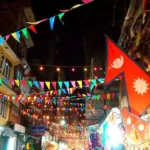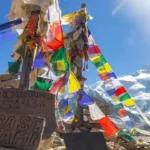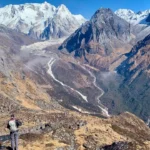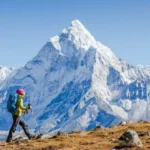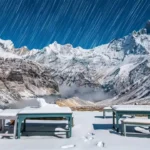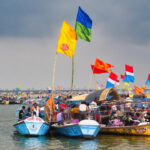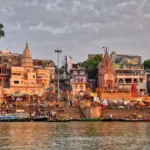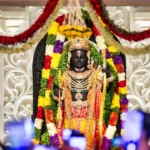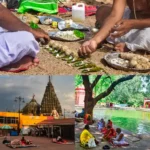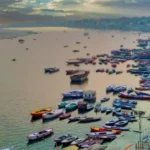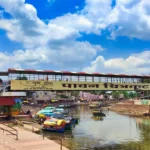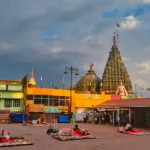Historical Significance of Gorkha
Gorkha isn’t just the geographical heart of Nepal—it’s the spiritual and historical core of the nation. It was here that King Prithvi Narayan Shah, born in 1723, envisioned a unified Nepal long before the idea of a single nation existed. His strategic brilliance and military campaigns, launched from the hills of Gorkha, eventually brought together dozens of small kingdoms and principalities to form what we now know as modern Nepal.
At the time, Nepal was fragmented into the Baise (22) and Chaubise (24) kingdoms—independent regions constantly battling for control. Prithvi Narayan Shah, a visionary even in his youth, recognised Gorkha’s strategic location between the trade routes of Tibet and India. From the Gorkha Durbar, a fortress-like palace that still stands proudly today, he planned and executed a decades-long campaign to unite these regions under one rule.
But Gorkha’s story doesn’t end with unification. It also gave rise to the Gurkhas—fearless warriors renowned worldwide for their courage and loyalty. The British were so impressed by the Gorkhalis during the Anglo-Nepalese War (1814–1816) that they began recruiting them into their army. Today, the legacy of the Gurkhas lives on in regiments serving across the globe, a living tribute to the Gorkha’s indomitable spirit.
Walking through the historic sites in Gorkha, you’re not just seeing old stones and monuments—you’re tracing the footsteps of a king who changed history and warriors who became legends.
Top Places to Visit in Gorkha
Gorkha may be small, but it’s rich in must-see landmarks that blend history, spirituality, and stunning natural views. Whether you’re trekking up to an ancient fortress or riding a cable car to a sacred hilltop temple, each spot tells a story. Here are the top places to explore when visiting the birthplace of Nepal:
🏯 Gorkha Durbar (Gorkha Palace)
Perched dramatically on a ridge overlooking the town, Gorkha Durbar is part palace, part temple, and part fort. This 17th-century structure was the seat of King Prithvi Narayan Shah and the launchpad for the unification of Nepal. The climb up to the palace is a bit of a workout, but the panoramic views of the Himalayan range—on a clear day, you can even spot Manaslu and Annapurna—are more than worth it. The palace complex includes ancient stone carvings, intricate woodwork, and a palpable sense of history.
🛕 Gorkha Kalika Temple
Just beside the palace lies the Gorkha Kalika Temple, dedicated to the goddess Kali. A revered spot for both locals and pilgrims, this temple is a powerful blend of spiritual energy and traditional Newari architecture. The temple is especially lively during Dashain, when thousands of devotees come to offer prayers.
🪖 Gurkha Museum
A tribute to Nepal’s most iconic warriors, the Gurkha Museum is a must for anyone interested in military history. Located in the heart of Gorkha Bazaar, the museum showcases weapons, uniforms, medals, and stories of the legendary Gurkhas, who’ve served in armies across the world. It’s a moving reminder of the bravery and sacrifice that define the Gorkhali spirit.

🏞️ Manakamana Temple & Cable Car
A short drive from Gorkha brings you to the base of the Manakamana Cable Car, which offers a scenic ride up to one of Nepal’s most important Hindu temples. The Manakamana Temple is dedicated to the wish-fulfilling goddess Bhagwati, and it’s a major pilgrimage site. Whether you’re spiritual or simply in it for the view, this ride over lush valleys and rivers is unforgettable.
🥾 Hiking Trails & Mountain Views
For nature lovers and trekking enthusiasts, Gorkha offers access to less-crowded trails with rewarding vistas. It serves as a gateway to the Manaslu Circuit Trek, one of Nepal’s most beautiful and culturally rich routes. Even shorter hikes around the town reveal sweeping views of terraced hillsides, forests, and snowy peaks.
Culture and Traditions of Gorkha
Gorkha is more than a historical landmark—it’s a living cultural tapestry shaped by centuries of tradition, spirituality, and ethnic diversity. Its people, customs, and celebrations make it a destination where history isn’t just remembered—it’s lived.
👥 Ethnic Groups and Community Life
The heart of Gorkha beats with the traditions of several ethnic groups, primarily the Gurung, Magar, and Newar communities. Each brings its distinct language, attire, rituals, and social customs. The Gurungs and Magars, known for their deep-rooted connections to the land and military service (many join the Gurkha regiments), maintain strong communal values, often gathering in village circles to celebrate music and dance. The Newars, historically known for their architectural and artistic skills, have also contributed greatly to Gorkha’s cultural legacy.
🎉 Festivals in Gorkha
Gorkha lights up during Nepal’s major festivals, with local traditions adding a unique twist.
- Dashain, the biggest Hindu festival, is especially grand here, with special pujas at the Gorkha Kalika Temple.
- Tihar (Festival of Lights) turns villages and towns into glowing celebrations of family, prosperity, and spiritual devotion.
- Lhosar, celebrated by the Gurung and Magar communities, marks the New Year with colourful dances, traditional food, and lots of communal feasting.
🏡 Architecture, Dress, and Daily Life
Traditional stone and mud houses, often with slate roofs and carved wooden windows, line the hilly settlements of Gorkha. Villagers still practice age-old crafts like weaving and farming, giving you a glimpse into sustainable mountain living.
You’ll often see elders wearing traditional attire—daura suruwal for men and gunyo cholo or phariya for women—especially during religious or festive events. It’s not just about looks; these clothes carry cultural symbolism passed down through generations.
Food is another part of daily life where culture shines. Expect hearty, local flavours: dhido, gundruk, sel roti, and freshly brewed jaand (millet beer) are all part of the experience.
Whether you’re joining a local dance during Lhosar or sipping tea in a hilltop village, Gorkha’s cultural richness welcomes you with warmth and authenticity.










